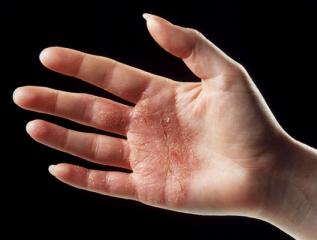What you should know about latex allergy

How can latex cause allergies?
Latex is the natural sap of the rubber tree and is considered to be the best glove material for general health care use. Reaction risks vary greatly, but can occur through wearing gloves, coming into contact with gloves or being in an environment where powdered gloves are in use. Both latex proteins and processing chemical residues can cause irritations and allergies at the point of contact. Glove powder can carry the proteins in to the air where it can be inhaled.
What type of reactions can be caused by latex?
An allergy is an acquired sensitised response to a specified agent. General allergic reactions are and can be caused by many natural things including penicillin, nuts, insect stings etc. Latex is a natural product so it is not surprising that it can cause allergic responses. Reactions have increased due to more extensive glove use since AIDS awareness in the 1980’s.
Research has discovered that if someone is allergic to banana, avocado, kiwi, pineapple, peach, papaya, potatoes or chestnuts they are also more likely to be allergic to latex (and vice versa). This fact can be used as a very simple guide to identifying those who may be at risk.
It is important to understand that not all reactions are allergies, some are irritations and irritations are more common than allergies.
Irritant Contact Dermatitis
This is the most common reaction, which presents on the hands as an itchy rash with cracks or sores. Avoiding the irritant will reverse the effects, so using a non latex glove will usually solve the problem.
Type IV Allergic Contact Dermatitis
This is a sensitisation to the chemicals added to latex during glove manufacture and usually occurs 6 to 48 hours after glove contact. It is usually confined to the contact area causing dry, itchy, leathery skin with papules, cracks and sores. Sensitisation can occur even after using gloves with no problems in the past but once a reaction has occurred, any subsequent exposure will cause a repeat of the symptoms. Many of the chemicals that cause this reaction in latex gloves are also present in non-latex synthetic gloves too, so avoidance can be difficult.
NOTE: Consideration must be given to other causes such as hand washing technique, agents and creams as these are often the cause, and not the gloves themselves.
Type I Immediate Latex Protein Hypersensitivity
This is a more serious allergic response to the extractable protein in the latex and can occur through contact with latex gloves or by inhaling airborne glove powder carrying the latex protein. Symptoms may include rash, wheals, hives, facial swelling, respiratory distress, rhinitis, conjunctivitis and collapse. On rare occasions anaphylaxis can occur, which is life threatening.
Type I and IV require prior exposure to sensitise the wearer.
How are reactions formally diagnosed?
On developing a possible glove related reaction it is important to seek early advice from occupational health staff who may arrange testing to identify the cause. Several tests exist:
Use Test
A moistened glove finger is applied for up to 30 minutes. A reaction will identify the source material but not the specific allergen.
Patch Test
This is used to identify specific antigens causing Type IV, delayed chemical hypersensitivity over a period of up to 2 days. A patch of test material is applied and removed on day 2 and then day 4 to check whether a reaction has occurred.
Skin Prick Test
This is seen as the ‘gold standard’ test to identify latex allergy [6]. This has to be carried out by medical personnel In case a severe reaction occurs during the test. A drop of test liquid is applied into the skin prick site, where any reaction can be monitored and measured.
In Vitro Testing
This test is carried out on blood serum in a laboratory following a blood test rather than on the person to identify latex specific antibodies.
Who is at risk of developing a reaction to latex?
Estimates show around 1% of the population may react to latex whilst higher risk groups will include health care workers, people who have had a lot of operations (e.g. Spina bifida sufferers 34-64% [7] and rubber industry workers. In Malaysia, 2-4% of rubber workers with constant exposure have latex protein allergy [8]. People who already suffer from dermatitis, asthma and certain food allergies are known to be at increased potential risk of developing allergies in general including latex protein allergy [9]. People in contact with or in the environment of heavily powdered latex gloves with high protein and chemical levels face a greater risk than if good quality low protein powder free latex gloves were used.
What you can do to minimise the risk
- Ensure users and purchasers are aware of latex allergy and the risks
- Seek informed opinions from occupational health professionals etc
- Use low protein powder free latex gloves. Gloves of a protein less than 100μg/g show little or no allergenicity [10].
- Produce and use a latex policy that includes risk assessment
- Ensure that glove specifications meet current recommendations
- Cover any skin breaks before donning gloves
- Question whether gloves are needed? If so they should not be left on any longer than necessary and hands should be washed and dried on their removal
- Provide alternative materials to individuals sensitised to latex proteins (e.g nitrile)
- Carry out pre-employment/admission assessments and record the results clearly in personal notes.
- Always report and record glove reactions to occupational health and as required the Adverse Incident Centre of the
- Medical Devices Agency.
How to managed sensitised personnel
- Ensure that they are fully understand their allergy, its risks and management.
- Ensure that colleagues, occupational health, GPs, Dentists and purchasers of gloves are aware of a person’s allergy and the implications.
- Provide them with latex free alternatives after an adequate assessment of their barrier properties has been performed.
- Specify that gloves should only be worn when necessary and removed as soon as possible with hands being washed and dried after removing gloves to remove proteins and chemicals
- Eliminate the use of powdered latex gloves from the working environment (Latex proteins can be carried in to the air by glove powder and inhaled) [11].
- Ensure latex allergy sufferers are first on the operating list if they need surgery, to reduce the risk of contact with airborne proteins.
- Ensure persons with Type I consider wearing a Medic-Alert type bracelet and carry an anaphylaxis kit (e,g an EpiPen on MiniJet). Extreme reactions are rare.
- Report the allergy to the Adverse Incident Centre of the Medical Devices Agency. They can use this information monitor the incidence of latex allergy*
- Contact the Latex Allergy Support Group for practical advice and support**
Why not just switch to vinyl gloves?
Gloves are worn primarily as a barrier and as such are a significant safety device for health care workers. They are not impermeable, but do significantly reduce the risk of contact and harmful materials. Latex provides the most effective barrier protection so simply changing to, for example, vinyl is not the answer as the likelihood of that barrier breached is increased.
Vinyl glove barrier properties are rapidly reduced with use, compared to the effective barrier maintained by latex. Research has highlighted the deficiencies of vinyl as a barrier material compared to latex [17,18,19,20,21]. Incineration is the only safe method of disposal of gloves. Vinyl gives off harmful toxins, whereas natural rubber latex produces only water and carbon dioxide. When considering other non latex gloves it is important to consider the quality of the barrier they provide and also factors such as ease of donning, smell and cost. Non-latex gloves may elicit a Type IV hypersensitivity reaction in some users since the same compounding chemicals used with latex may be used in their processing. Therefore, unless one is latex sensitive, the glove of choice should clearly be that of latex.
How can we be sure we are using safe gloves?
- Use a reputable supplier able to supply a full range of gloves, including non-latex alternatives, on a continuing basis.
- Ensure gloves meet all current recommendations
- Where possible, choose latex – it offers the best barrier protection
- Insist on low protein powder free gloves (less than 50 μg/g).
- Ask to see independent test results for protein and residual chemical levels of the gloves you are using.
- Keep abreast of findings and advice
- Set up a glove advisory group to pool all experts/interested persons.
- First aid treatment for allergic reactions
- Recognise the symptoms of an allergic reaction: itching, rash, swelling, wheezing, pallor/flushed skin, distress, shock (lowered blood pressure), collapse and unconsciousness.
- Promptly remove contact with the likely cause if possible.
- Sit or lie the victim down.
- Ensure a clear airway, loosen restrictive clothing.
- Seek urgent medical attention if the patient continues to be unwell/distressed.
- Make a note of previous medical history, including ANY other allergies.
- Assist the patient with any medication they would normally take in these circumstances.
- If the victim loses consciousness, place them in the recovery position and stay with them until the ambulance arrives.
- If you know the patient has a history of severe allergic reactions and you recognise the symptoms, if they have an auto-injection device and are unable to use it themselves consider giving it yourself. Normally instructions are simple and you may save their life.
- Be prepared to assist respiration in severe reactions.
- First aid skills may save a life – make sure you would know what to do in an emergency. D Brown, RGN, 1998
REFERENCES
*Medical Devices Agency, Hannibal House, Elephant and Castle, London, SE1 6TQ – Telephone 020 7972 8000
** Latex Allergy Support Group, 37 Little Acorns, Bishops Cleeve, Cheltenham, Gloucestershire, GL52 4YP – Telephone 01242 673 250
MRPRA Latex Protein Allergy and Your Gloves (Malaysian Rubber Producers Association);Vervloet D Later Allergy, Paris Symposium 1998; Nutter A.F Contact Urticaria to Rubber, British Journal of Dermatology 101,597, 1979; Palosuo T Latex Allergens, Natural Rubber Latex Allergy Paris 1998; Palosuo T Identifying & Quantifying N R Latex Protein Allergens; Latex Protein Allergy, Managing the Issue p 11-15, Amsterdam 1996;Konze Comparison of Latex Hypersensitivity among patients with neurological defects. Journal of Allergy and Clinical Immunology 1995:95, 950-4; Yip Dr E Residual Extractable Proteins and Allergenicity of Natural Rubber Products; Heilman Journal of Allergy and Clinical Immunology 1996:98, 325-330; 13 Koch H U Regulatory Aspects of Latex Allergy, (CEN – Extractable Protein and Allergen Assays for Latex Gloves). Rev Fr Allergol 1997, 37 (8), 1201 – 1210; 14,15,16 MRPRA Allergic Potential of Gloves; Korniewicz Leakage of Virus through Used Vinyl and Latex Examinaiton Gloves 1990; Laidlaw Permeability of latex and PVC gloves to neoplastic drugs American Society of Hospital Pharmacy 1984; De Groot-Kosolcharoen and Jones Permeability of vinyl and latex gloves to water and blood; American Journal of Infection Control 1989; Kotilainen Latex and Vinyl Non-Sterile Examinaiton gloves:Status report on laboratory evaluation of defects by physical and biological methods. Applied and Enviromental Mircobiology 1990; Olsen Examination gloves as Barriers to Hand Contamination in Clinical Practice, JAMA 1993


























